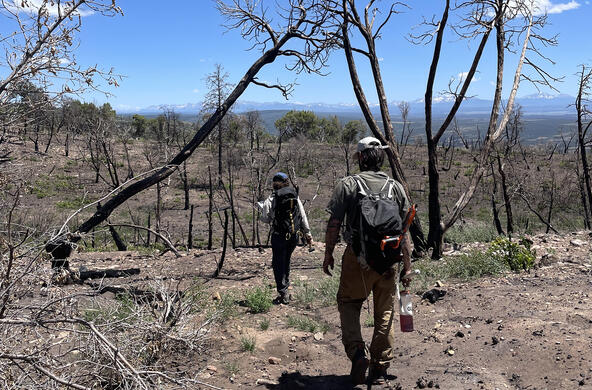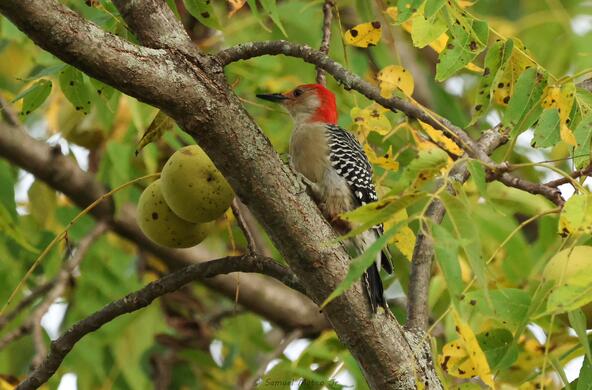Dispersal, the ability of organisms to move to new habitats, takes on increasing importance in a rapidly changing world. Some organisms, like birds, get around easily; others, like tortoises, move only slowly. The lands uncovered by the melting of the last continental glaciers 10,000 to 18,000 years ago were recolonized by organisms that we recognize as native species today, including some turtles that must have moved northward very slowly. With the ongoing changes in global climate, will species move fast enough to keep up with favorable habitats during the next couple of centuries?
I first thought about dispersal when I saw a paper in the Ohio Journal of Science in 1971 on the colonization of mosses on Deception Island in Antarctica after an explosive volcanic eruption in 1969. The nearest place where the same species was found was 1,000 km away.
It is not surprising that bacteria and fungal spores are carried long distances by the wind. So much so that in a survey of households, the dust collected from the molding over their front doors contained a similar assemblage of bacterial species in urban areas across America. It is likely that soil bacteria from anywhere can get everywhere in a short period of time.
Not so for the various bacteria and viruses that infect humans and other higher organisms. Here, the movement of the host organism is important. The fungus causing Dutch elm disease did not pass from Europe to North America until elm wood with bark beetles was transported across the sea. Zika appeared in Miami, not because mosquitoes carried it from Brazil, but from travelers arriving in Miami after being infected in South America.
The dispersal of trees may have a dominant influence on the characteristics of future forests. Some species with wind-borne seeds, like sugar maple, may move more slowly to favorable climate zones than larger-seeded species, such as oaks, that are carried by birds. The movement of animals may well depend on the connections between remaining fragments of habitat—much more easily in the western U.S. than in the East because more connected natural habitat remains in the West. In all cases, the migration of trees via seed dispersal is likely to lag behind the ongoing and anticipated changes in climate.
Of course, in many cases, humans can act as an agent or vector to aid in the dispersal of many species even across barriers of habitat. Undoubtedly, we will help in the delivery of agricultural species to new fields where climate conditions are appropriate. But, we will also aid in the delivery of pests and pathogens to habitats where they may devastate native species that have not evolved an immune resistance—witness the American Elm and Chestnut in eastern forests.
In our increasingly connected world, in which air travel speeds the delivery of people and products, the dispersal of many species is augmented many-fold. Agricultural inspections and quarantines may not be enough to stop the spread of harmful invasive species. At the same time, we need to enhance the dispersal of native species to keep up with rapidly changing conditions.
References
Barbaran, A., J. Ladau, J.W. Leff, K.S. Pollard, H.L. Menninger, R.R. Dunn and N. Fierer. 2015. Continental-scale distribution of dust-associated bacteria and fungi. Proceedings of the National Academy of Sciences 112: 5756-5761.
Ibanez, I., J.S. Clark, and M.C. Dietze. 2009. Estimating colonization potential of migrant tree species. Global Change Biology 15: 1173-1188.
Lovett, G.M., M. Weiss, A.M. Liebhold, T.P. Holmes, B. Leung, K. Fallon-Lambert, D.A. Orwig, F.T. Campbell, J. Rosenthal, D.G. McCullough, R. Wildova, M.P. Ayers, C.D. Canham, D.R. Foster, S.L. LaDeau, and T. Weldy. 2016. Nonnative forest insects and pathogens in the United States: Impacts and policy options. Ecological Applications 26: 1437-1455.
McGuire, J.L., J.J. Lawler, B.H. McRae, T.A. Nunez, and D.M. Theobald. 2016. Achieving climate connectivity in a fragmented landscape. Proceedings of the National Academy of Science 113: 7195-7200.
Smets, W., S. Moretti, S. Denys, and S. Lebeer. 2016. Airborne bacteria in the atmosphere: Presence, purpose and potential. Atmospheric Environment 139: 214-221.
Young, S.B. and J.-R. Klay. 1971. Bryophytes in the 1969 crater of Deception Island, Antarctica: An apparent case of rapid long-distance dispersal. Ohio Journal of Science 71: 358-362.
Zhu, K., C.W. Woodall, and J.S. Clark. 2012. Failure to migrate: lack of tree range expansion in response to climate change. Global Change Biology 18: 1042-1052.







